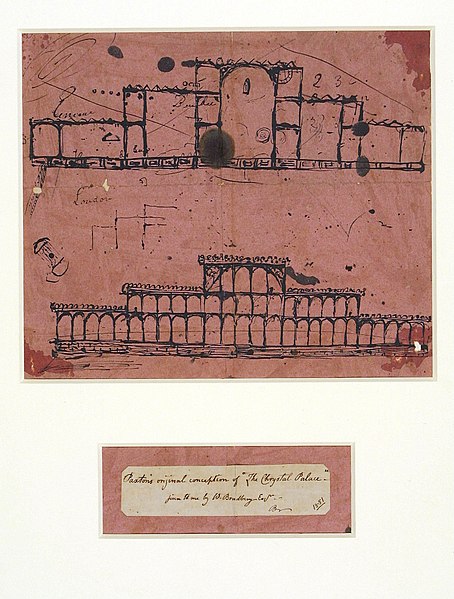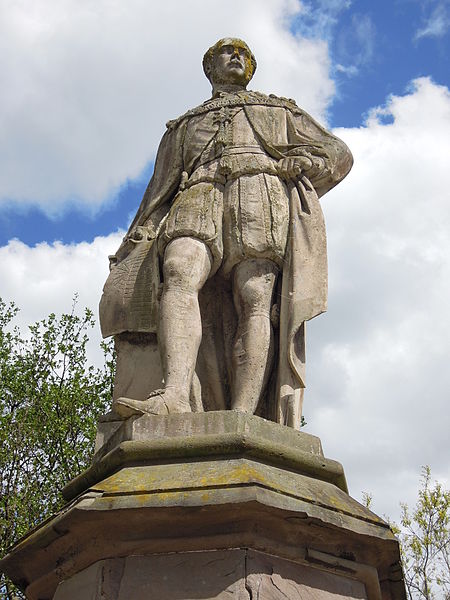Sir Joseph Paxton was an English gardener, architect, engineer and Member of Parliament, best known for designing the Crystal Palace and for cultivating the Cavendish banana, the most consumed banana in the Western world.
Sir Joseph Paxton
The Conservative Wall at Chatsworth
Annie Paxton standing on a Victoria amazonica leaf in the lily house; Paxton's design for the Crystal Palace took its cue from the organic structure of this plant.
Named after William Cavendish, Cavendish bananas were cultivated by Paxton in the greenhouses of Chatsworth House in 1836. They account for the vast majority of bananas consumed in the western world.
The Crystal Palace was a cast iron and plate glass structure, originally built in Hyde Park, London, to house the Great Exhibition of 1851. The exhibition took place from 1 May to 15 October 1851, and more than 14,000 exhibitors from around the world gathered in its 990,000 square feet (92,000 m2) exhibition space to display examples of technology developed in the Industrial Revolution. Designed by Joseph Paxton, the Great Exhibition building was 1,851 feet (564 m) long, with an interior height of 128 feet (39 m), and was three times the size of St Paul's Cathedral.
The Crystal Palace at Sydenham (1854)
The Crystal Palace in Hyde Park for the Grand International Exhibition of 1851
Joseph Paxton's first sketch for the Great Exhibition Building, c. 1850, using pen and ink on blotting paper; Victoria and Albert Museum
An 1864 Statue of Albert, Prince Consort, holding a plan of the Crystal Palace








